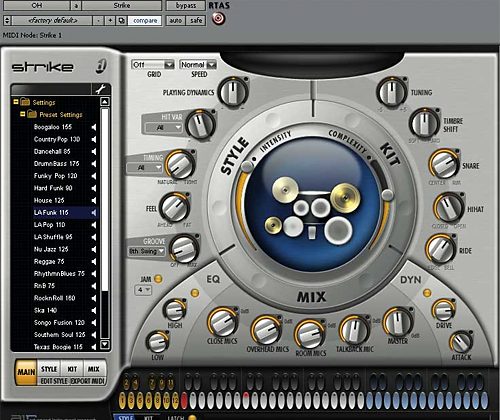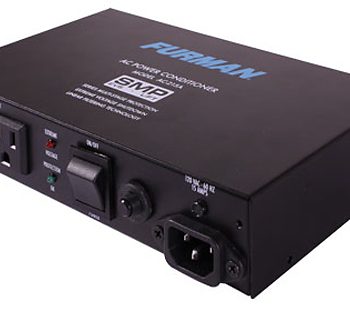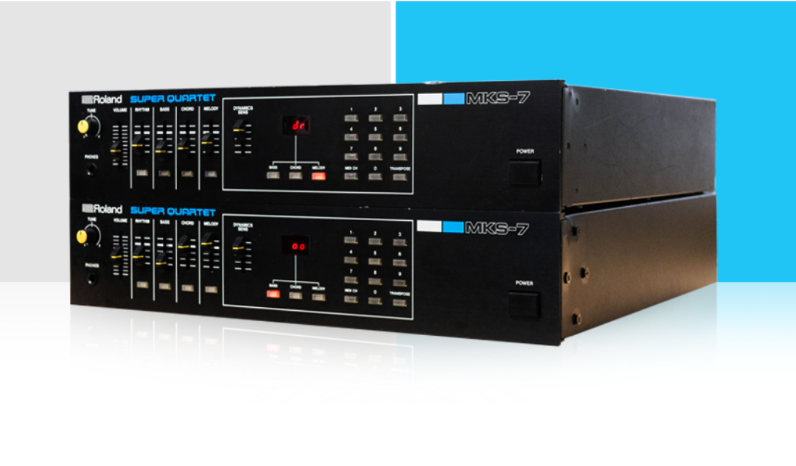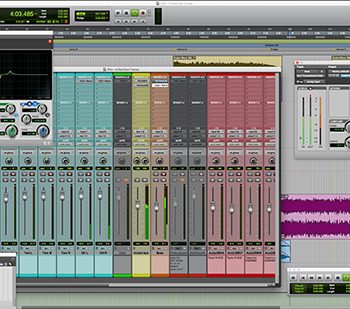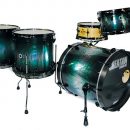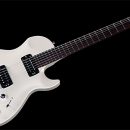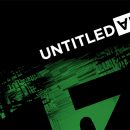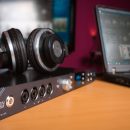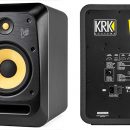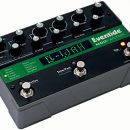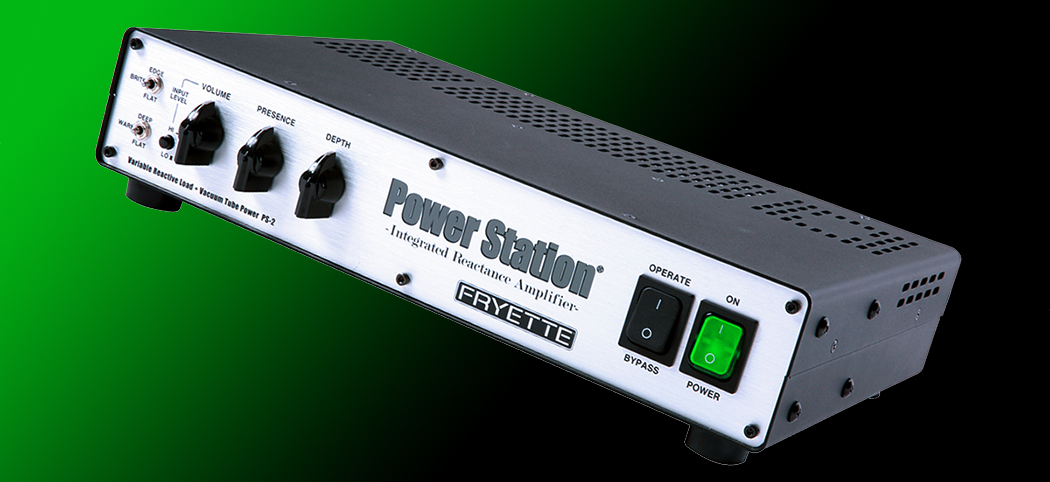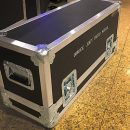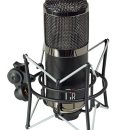Whether you’re an old-school musician or just an old musician (and by that we mean 30s and up), you may have gotten lost trying to figure out today’s modern alternatives to drum machines. Yes, there are still a variety of hardware drum machines on the market, and sample-based keyboard workstations with built-in sequencers are still widely available. However, most musicians recording with computer-based DAWs face an overwhelming number of drumming options, and deciding on the right new solution for your programmed drum requirements can be an overwhelming task.
| Category | Value | Rating |
| Features | 20% | |
| Usability | 25% | |
| Sound | 25% | |
| Documentation & Support | 10% | |
| Price | 20% | |
| OVERALL RATING = 3.4 3.6 stars or better: Outstanding, WIHO Award 3 stars or better: Worth considering 2 stars or better: Suited to specific needs 1 star or less: Not recommended |
||
Most computer-based solutions have been complex affairs. Typically, they are drum libraries – collections of sampled drum sounds, or virtual drum playback machines. To use them, you need a host DAW environment with a sequencer, and you have to learn the basics (or more) of integrating your sequencer with the drum libraries. It’s a lot to figure out before you ever program your first beat, and there is no instant gratification like when you set up a hardware drum machine that comes preloaded with a number of patterns to play right out of the box.
At least that was the case with electronic drumming solutions before Digidesign Strike was created for use in the Pro Tools DAW environment. Other solutions seem so needlessly cumbersome by comparison! Strike combines the simplicity of a sample-based drum machine with the advantages of a great sounding sample-based sound library, wrapped up in an outstanding user interface that redefines the experience of working with pre-programmed drum beats and rhythm sections.
Don’t think of it as a preprogrammed solution in the traditional sense, though. Just because you hear it play a beat doesn’t mean that’s the way the beat goes. Huh? With Strike, you can manipulate beats in real time, changing the complexity of the patterns. You can change the groove or swing factor, alter the dynamics of the drum hits, change the mix of different drum mics and room mics in the virtual drum studio, decide if snare hits should have more rim or be more centered, and more. All of these changes can be made in real time while the beat goes on.
Strike sounds fantastic, from the quality of the drum samples to the sound of the beats, and if you’re not satisfied with the assortment of kits and patterns, you can easily assemble your own custom kits and program your own beats and fills, then lay them down on an instrument track. Strike is far more musical sounding than a traditional drum machine, and it works great both as a tool for recording without a human drummer as well as for use as a live rehearsal solution when you’re writing songs lacking the benefit of a live drummer in the room.
Features
Strike is the drum machine you always wished for but didn’t know you could have. First, it comes loaded with numerous sampled drums arranged in five different drum kits, each containing up to twelve instruments. The drum samples are 24-bit, and over 20 GB of samples are included with the product.
The list of specific drums sampled for the five kits is noteworthy and includes drums from Yamaha, Pearl, Gretch, Tama, Ludwig, and Premiere. Cymbals include many from Zildjian, Sabian, and Paiste. A detailed list of the sampled drum specs is available on the Digidesign web site.
Unlike products with only a few samples of each piece in a kit, Strike features as many as three hundred samples per instrument, so as you adjust the dynamics and other tonal characteristics of a kit, subtle variety of sound is achieved not merely by programmatically altering a sample, but by featuring the introduction of additional samples into the sound of the particular drum.
There are over 1,500 editable drum patterns, arranged by style, and there’s really no limit to the number of new patterns you can program for yourself since the data is stored on your computer. A nice feature in Strike is how the patterns are arranged. Within a specific style, from Left to Right across the keyboard, patterns are grouped by Intro, Verse, Bridge, Chorus, and Outro, with fills on the black keys above the Verse section.
The user interface provides direct access to numerous features within Strike. All functions can be accessed using your mouse and a standard MIDI keyboard controller, or you can map most of the controls to other MIDI control surfaces.
Numerous controls enable you to significantly change the drum performance within Strike. Unlike an old drum machine that simply plays a pattern, there are many adjustable features in Strike that really transform the sounds from their starting points.
You can globally adjust the complexity of a drum pattern, its intensity (dynamics), and even the timing of hits, swing, and groove. Literally, as you increase the Complexity, the drumbeat or fill becomes more complex.
There is plenty to be done with the sound, too. You can adjust whether or not snare drum hits are closer to the rim or the center if hi-hats should sound more open or more closed, and whether or not the ride cymbal should be played closer to the cup or the bell.
The sound of the recording environment can also be manipulated. There are controls for adjusting the positioning of close mics, room mics, overheads, and even the talkback mic!
As if those global options weren’t enough, there are plenty of things that Strike enables you to do with individual drum components. For example, in the Style section of Strike, you can adjust the intensity or complexity of individual drums within a pattern.
In the Kit section, you can customize the drum kit, tweaking individual drum sounds for their tuning, start points, attack, and decay, and relative levels.
The Mix section lets you adjust mic positions, EQ, and control up to two effects sends for routing effects to individual drums in a kit. Strike has numerous effects built-in ranging from delays and reverb to gates, chorus, phaser, ring modulator, and more.
Finally, the pattern Editor enables you to customize the drum patterns using a very clever interface that provides control over notes/hits, their placement, and their velocities.
You can also use Strike as a General MIDI sound source.
The only thing really missing from Strike is the ability to load in your own drum sample libraries. On one hand, Strike saves you from having to deal with drum libraries if you’d rather just get down to the business of laying down humanized drum tracks. But on the other hand, its interface is so powerful that adding this capability would make a great instrument even greater.
Usability
We installed Strike on an Apple Power Macintosh G5 DP running Digidesign Pro Tools LE 7.3. Installation was straightforward, and we were able to launch Strike as a plug-in on a stereo instrument track within minutes of completing the installation.
We connected a Roland synthesizer of ours to the MIDI interface on our Digidesign 002r and had no trouble taking control of Strike.
The middle of the default display features a virtual drum kit that shows kit elements being struck in real time. Surrounding it, though, are numerous global controls that set this drum machine in a league of its own.
By adjusting the Complexity slider alongside the virtual kit, our drum patterns evolved into more complex rhythms on-the-fly – more backbeats, accents on the hi-hats, extra grace notes on the kick, and so on. The Intensity slider adjusted the dynamics of the performance.
On the left-hand side of the display, drum sounds, kits, and patterns are arranged by style of music. Double-clicking a style loads the corresponding drum sounds and patterns into Strike, and this must be done before any sound will be generated.
Across the bottom of the display is a seventy-two note virtual keyboard, though the buttons weren’t really shaped like piano keys (at first, we didn’t realize we were looking at a piano keyboard map). Corresponding to the layout of a five-octave keyboard, though, the keys enabled us to select beats on the fly, drum fills, and individual drum hits. Note C1 at the bottom stopped Strike from playing, while the series of yellow-colored keys enabled us to selectively remove individual drum sounds from a currently playing beat – for example, to mute the hi-hat during a pattern.
Strike has intelligence that differentiates between beats and fills. We liked that beats played in continuous loops (a default you can disable), whereas drum fills, once triggered, would play only once and then the previously selected beat resumed playing. This made it very easy to create live performances on our virtual drum kit. The real-time control of pattern styles and dynamics performed beautifully.
Recording drum patterns into a song weren’t as intuitive as we expected given the simplicity of controlling Strike’s robust feature set. Before we connected our MIDI keyboard, we were simply selecting patterns and fills using our mouse to click on the virtual keyboard in the bottom of the Strike Main window. While this worked fine for manual performances, when we record-enabled the instrument track, it turned out that Strike did not write MIDI data from our mouse-clicks to the instrument track!
If you plan to use Strike without a MIDI controller, such as from a laptop computer on an airplane or in a coffee shop, the inability to directly record MIDI data could prove frustrating, but we did find a clever workaround for mobile drummers:
Tip: If you’re trying to record a drum performance using only your mouse, Strike doesn’t currently write MIDI data to the track. To work around this limitation, first, create a stereo audio track. Next, set the output from the Strike instrument track to a stereo bus (Bus 1-2, for example). On the new audio track, set the input to your chosen bus. This will enable you to record the audio output from Strike onto a separate track. You won’t have the flexibility of MIDI-based note editing, but if you want to capture your ideas while on-the-go, this will let you capture the magic.
Once we configured our MIDI keyboard to function within the Pro Tools environment, selecting patterns and fills from the keyboard worked perfectly to capture our performance on a record-enabled instrument track.

In the Style window, it was easy for us to customize individual components of our drum kit. For example, we could adjust the complexity of the hi-hat performance while leaving the rest of the kit’s performance unmodified.

In the Mix window, we were able to make a variety of changes to the sound of our drum kit, but not all settings were immediately obvious. While adjusting the level of a kick or snare drum was intuitive, the EQ and effect Sends were less obvious.
When you adjust one of the instruments, the EQ curve in the top of the window displays for that specific drum, and you can easily adjust the settings for three EQ bands with an interface familiar to users of plug-ins like Digidesign’s EQ III. Additionally, the two effect Send windows next to the EQ curve let you select various effects to place on the individual drum sound.
Tip: To adjust the Q-value of the EQ point, right-click (Mac or Windows) or control-click (Mac) and move your mouse to increase or decrease. At the minimum settings, the Red EQ point becomes a low shelf, the Green EQ point becomes a high-pass filter, and the Blue EQ point becomes a high shelf.
In order to place effects, or adjust the EQ for another drum within the kit, we had to click on a button or adjust a slider on that virtual channel strip in order to bring attention to that piece of the kit.
The effects, plentiful in variety, offer rudimentary controls comparable to typical guitar stomp boxes… ie. They were very straightforward in their operation.

Editing drum patterns was easy. The Edit window graphically displayed the various drums in use during a pattern, and adjustments to the pattern were as simple as dragging instrument hits from one division on the grid to another. Further, the top half of the window enabled us to easily customize the velocity with which an instrument was hit.
What was less obvious, though, was how to actually program beats of our own from scratch. Fortunately, it was easy to modify existing beats to suit our needs, but a more apparent pattern-style sequencing interface would make creating drum patterns from scratch a more intuitive process.
As with other plug-ins, Strike can be automated, and it doesn’t seem like any feature was left without this option. We were able to automate things ranging from changing our room sound to changing the groove much more easily than similar work on an actual live drum track.
The only things left for Strike to do that would help it to achieve drumming nirvana are: A) Provide a way for us to build custom drum kits using third-party sound libraries and samples from our own collections, and B) provide a more obvious and intuitive interface for programming beats of our own from scratch, drum machine style.
Sound
Strike sounds great – better than any drum machine we ever owned, better than the sequenced capabilities of keyboard music workstations, and yes, better than many of the drummers we’ve played with, too!
The variety of sampled drums, arranged in various kits and styles, really gave us all the goods. With so many rhythm products these days, the focus is on techno and hip-hop sounds and beats. It seems like the rock drummer was completely ignored, but Strike really turns the table on that notion. Besides very creative electronic drum sounds, we were thrilled to experience rock drums ranging from Nu Metal to Grunge to Punk Rock, jazz and country kits, and more. These were useful not only for recording purposes but for songwriting and band rehearsals without a live drummer.
The flexible control over beat Complexity, Feel, and location of the snare hits really enabled us to custom tailor drum performances that inspired us. Changing the tonal characteristics with the various overhead mics, room mics, etc. was further icing on the cake.
Although controls for the effects were basic, they sounded good, and the little Terry Bozio within us derived particular pleasure from applying the phaser to our cymbals. Given the great sounding room ambiance, easily adjusted to taste by manipulating the microphones, we found ourselves not even bothering to apply reverb to our drums. And for even higher-quality effects, we were still able to apply additional plug-ins to our Strike instrument track.
As with every other sampled drum kit we’ve ever played, the hi-hats were our only disappointment, but really, that’s too harsh a word to describe them because they were good – just not as good as the rest of the sampled material.
Documentation and Product Support
The documentation was very good and covered the operation of Strike in great detail, but unfortunately, only existed in PDF form. A printed booklet would have been much more useful as it’s extremely frustrating to work with a PDF manual while trying to use Strike.
We believe in saving trees, but boxed products (as opposed to purchased downloads) should come with printed manuals, which are more economical overall than people printing the PDFs out at home. Strike has tremendous flexibility beneath the more obvious top-level controls, so you will be spending time reading these instructions.
Price
Digidesign Strike sells for $299, and it certainly blows similarly-priced hardware drum machines out of the water. Of course, it’s only available as a plug-in for Pro Tools, so not everyone will get to benefit from its capabilities.
For a similar price, there are other drum libraries on the market, some of which provide the ability to customize the acoustic space, but nothing else that we have seen offers this combination of customized sound space, performance capability, and overall fun.
Contact Information
Digidesign
www.digidesign.com
| Evaluation Short-List |
|

